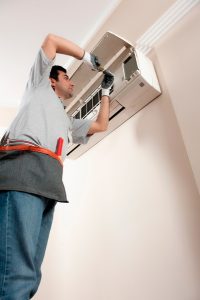If you’re considering a new way to heat and cool your home, ductless mini split systems are an efficient, flexible solution. These systems provide targeted comfort without the need for ductwork, making them a great option for older homes, additions, garages, or any space that lacks central air. But how are ductless mini splits installed, and why is professional help so important throughout the process? Let’s break it down. Here’s what you should know about ductless cooling in Covington, LA.
The Benefits of Going Ductless
Ductless mini-splits offer several advantages over traditional HVAC systems. First, they’re energy-efficient. Because air doesn’t have to travel through ductwork, there’s no energy lost through leaks or poorly insulated ducts. Many mini split systems also qualify for energy rebates and incentives due to their high efficiency ratings.
Additionally, they provide zoned comfort. Each indoor unit can be individually controlled, allowing different rooms to be set to different temperatures based on use and preference. This kind of customization isn’t possible with a standard central air system.
Finally, they’re quiet, compact, and discreet. With sleek indoor units mounted on the wall or ceiling, and a small outdoor compressor unit, mini splits can blend into your space without bulky ductwork or loud operation.
Easier Installation Than Ducted Systems
One of the biggest advantages of ductless mini splits is the simplicity of installation. Installing ductwork in an existing home—or replacing existing ductwork that’s in poor condition—can involve extensive demolition, disruption, and high costs. In contrast, a ductless system requires only a small hole in the wall to connect indoor units to the outdoor compressor via refrigerant lines, electrical wiring, and a condensate drain.
This streamlined setup makes it possible to install a ductless system in just one to two days in many cases—especially when working with an experienced HVAC team.
What Happens During Installation?
The installation process begins with a consultation to determine your home’s heating and cooling needs. Professional HVAC technicians will help you select the right system size and configuration. For example, you might need one indoor unit for a single room, or multiple units for a whole-home solution.
Once the plan is in place, installation day includes:
- Mounting Indoor Units – Wall-mounted air handlers are installed in the desired locations. These are typically placed high on a wall for optimal air circulation.
- Drilling the Access Hole – A small (usually 3-inch) hole is drilled through the wall to run the refrigerant lines, power cables, and drain line to the outdoor unit.
- Installing the Outdoor Unit – The outdoor condenser/compressor is positioned on a level surface, often on a concrete pad or wall bracket.
- Connecting and Sealing Lines – All lines are connected between the indoor and outdoor components, sealed for weather protection, and the system is vacuumed to remove air and moisture.
- Testing and System Startup – Once everything is connected, your technician will start the system, check pressures and electrical connections, and verify that all zones are operating properly.
Why You Need Expert Help
While ductless systems are easier to install than traditional ducted ones, they still require professional expertise. Proper sizing, placement, refrigerant charging, and electrical work are critical to getting the best performance from your system. Poor installation can result in inefficiency, system wear, and even void your warranty.
Our expert HVAC team is here to guide you every step of the way—from assessing your needs to completing a flawless installation. And we do have special expertise, as a Mitsubishi Ductless Pro Preferred Dealer! Ready to upgrade your comfort with a ductless mini split system? Reach out today and let’s get started!


